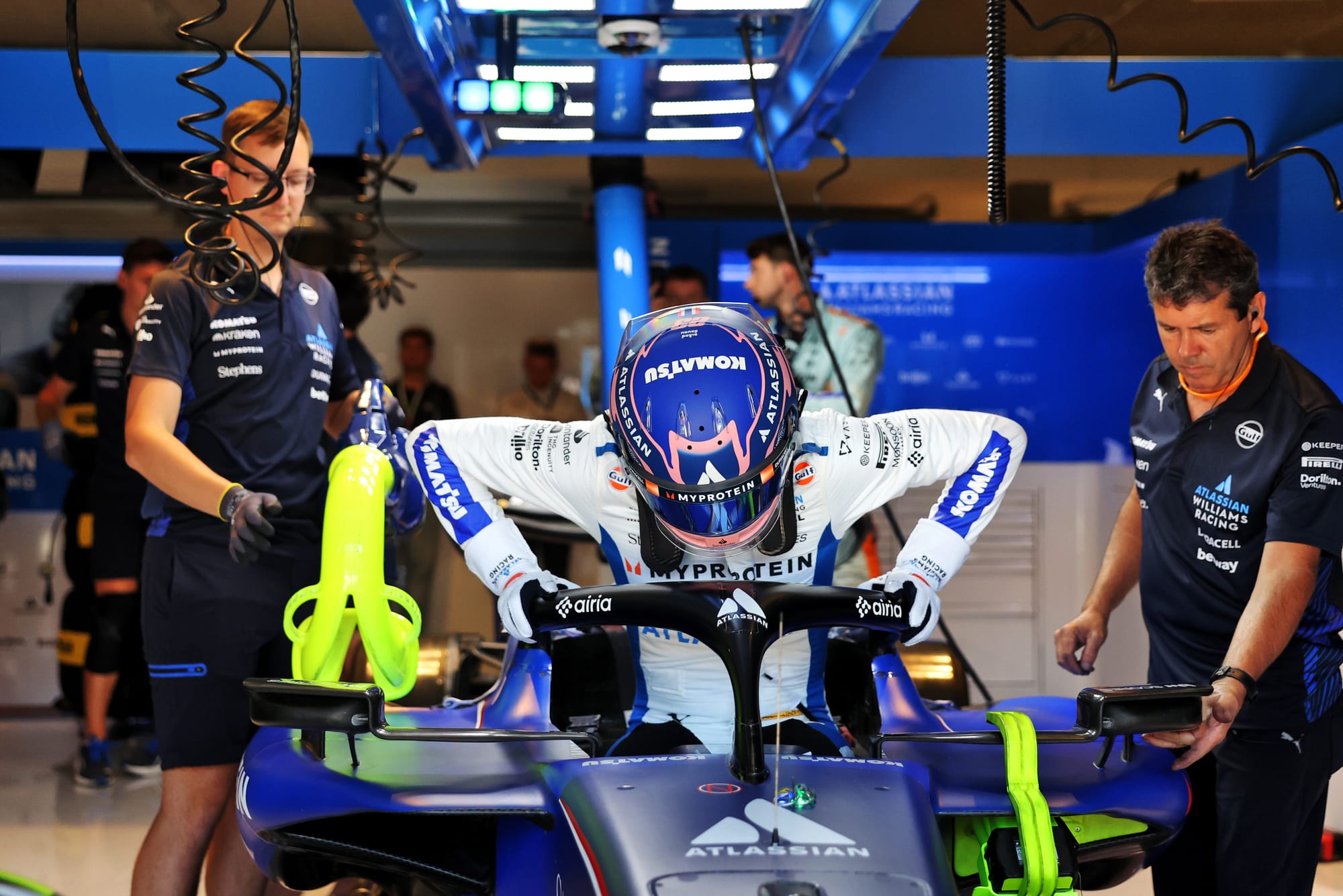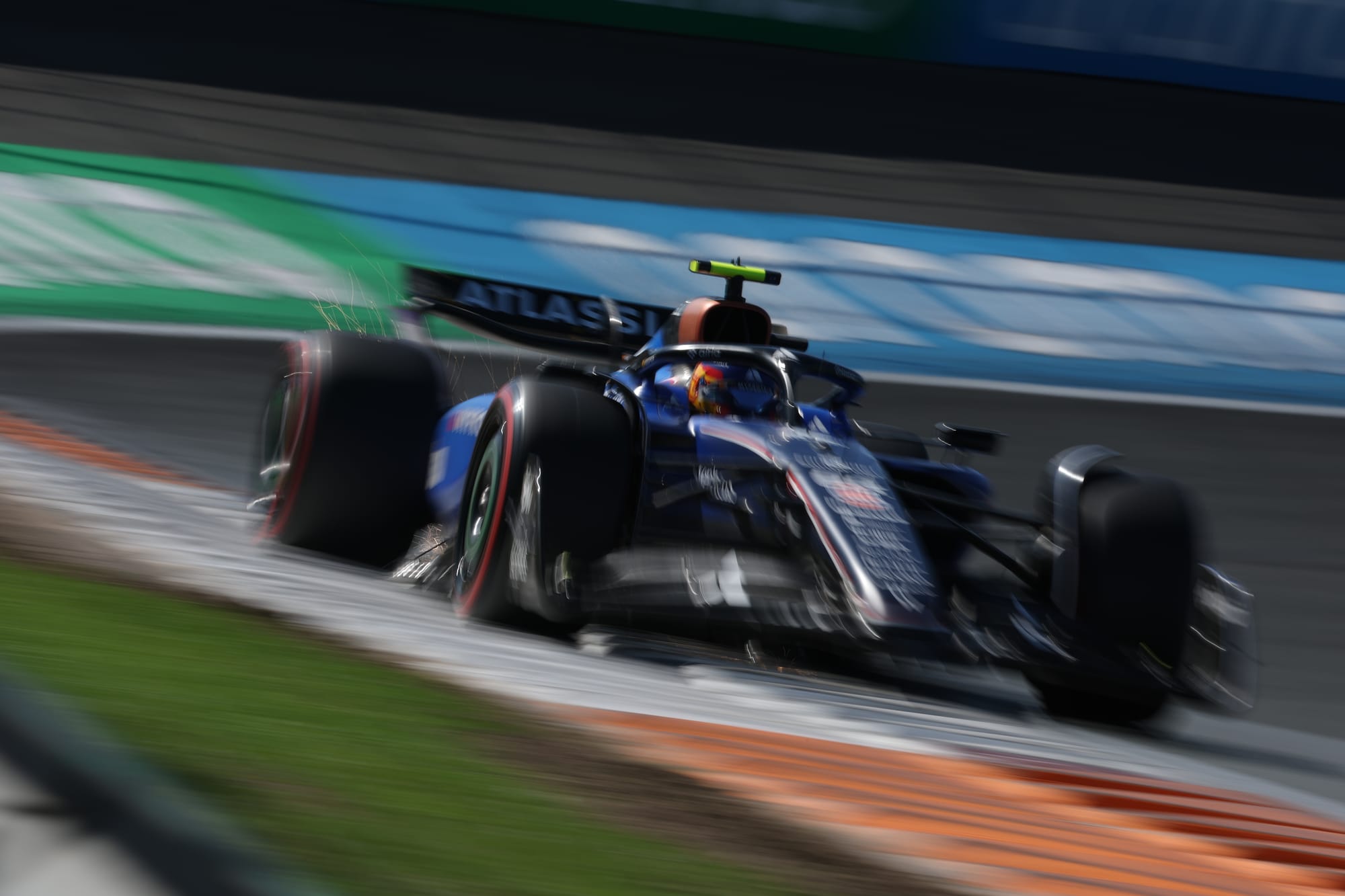Formula 1's a relative game – so success is not only dependent on a team doing the best job itself. It can also make life difficult for the opposition.
So in a season where the margins in qualifying are so tight, and the grid position gains from being on the right side of a few hundredths are so big, it's no surprise to hear that intriguing tactics are being unleashed.
These games were blown into the open in qualifying for the Dutch Grand Prix as Williams's Alex Albon found himself on the receiving end of rivals that, as he told his team over the radio, were "taking the piss."
His "why do we do it to ourselves" rant at Williams after his Q2 exit suggested he felt his team could've done more to stay out of trouble.
But the trigger was a tactic that's not just frustrating Williams.
Go fast or slow
The issue at play relates to tyre temperature management on out-laps and the fight to both get your own car into the right operating window, and perhaps also make sure the opposition are pushed out of theirs.
Albon found himself 15th and dumped out of Q2 at Zandvoort after a scrappy final run that had been wrecked by him failing to get his tyres anywhere up to the right temperature.
The Williams appears to be quite easy on its tyres, so for qualifying laps both Albon and team-mate Carlos Sainz need to attack quite hard on their preparation laps to get their rubber warmed up enough.
But Albon did not have the chance to do that in that final run – having found himself trapped behind the Racing Bulls of Isack Hadjar coming out of the pits and therefore losing a ton of time (and tyre temperature) on the way out onto the track.
With Hadjar already being super slow out of the pits, that not only meant that temperature seeped out of Albon's tyres.
It also pushed him into a window where, despite pushing like mad over the middle phase of the lap, in the final sector he had to slow down to let cars on their quick laps through – further reducing his chance to warm the tyres up.
As Albon turned into Tarzan at the start of his qualifying effort, the lack of bite highlighted how far off his tyres were.
Speaking afterwards, Albon said: "If we don't get our clean out-lap, we are nowhere.
"I think our out-lap is normally about - around this track so far this weekend - 10-15 seconds a lap quicker than the people around us.
"And my Q2 run two out-lap was maybe 20-25s slower than my normal out-lap. So you can imagine, that normally doesn't go well when you go into Turn 1."
From Albon's perspective, the Racing Bulls is one of the worst cars to get trapped behind. Liam Lawson and Hadjar have a habit of going slow on the out-laps because their motivation is keeping their tyre temperatures down.

A slow exit and a slow out-lap are the name of their game, which isn't so good for anyone behind them that needs to push on their out-lap.
A comparison of the out-laps for some of the critical runs in qualifying shows exactly what was at play – as the contrast between the speed that Hadjar's Racing Bulls and the Williams pair were doing is clear from their sector two times.
Out-lap middle sector times comparison
Final runs of Q1
Hadjar 33.600s
Sainz 31.297s
Albon 29.497s
First run in Q2
Hadjar 33.756s
Sainz 31.418s
Albon 30.264s
Second run in Q2
Hadjar 36.168s
Sainz 30.358s
Albon 28.922s
The car DNA element
The variety of car characteristics up and down the grid means that how everyone is treating their out-laps is all over the place.
While some teams such as Williams want quick exits and fast out-laps, Albon says others are well aware that not allowing squads like his to do this has extra benefits – especially when rivals' own cars don't need fast preparation laps.
"In that moment, it's basically, how versatile are you on your out-lap?" he said. "A team like RB and Aston, for example, their out-laps are about 15 seconds a lap slower than ours. So for them it doesn't matter.
"They can have the slow exit out of the pitlane and they can have a slow out-lap because that's what they do even on a clear run. That's not the same for us."
With strict rules in place about cars not pushing-in to the pitlane queue, and a maximum time delta on the out-lap to stop people building up gaps on track, where you are in the pit exit and who you get trapped behind is critical.
Albon even suggests others are playing games to shuffle cars behind them further down the order.
"With this regulation, with the minimum delta time and the pitlane thing, this is what it's come down to," he said.
"What is interesting is you'll actually see some teams purposely letting cars get in front of them, because for them it's better to cool the tyres down before they start their out-laps. Then it just creates chaos."
Williams is not alone in finding itself in the situation. The pitlane queue system means even teams at the front end, such as Ferrari, are finding themselves in a tricky spot as they get trapped waiting at the pit exit.
Ferrari team boss Fred Vasseur, who had seen Charles Leclerc take pole position in Hungary after electing to jump the gun and go super early rather than get involved in the normal queue, said recently it was a problem for everyone who needed to keep their tyres warm.
"When you are behind someone, you have to adapt your pace to the guy in front of you," he said.
"Some of our competitors, they don't have the same approach in terms of out-lap in terms of if you have to push at the beginning, at the end, or whatever.
"It means that sometimes you are just stuck into the traffic. You have to wait two minutes at the pit exit, then you can't push as you would like to do."
A complicated solution
The obvious way to avoid getting trapped behind too many or the wrong cars in qualifying is to go super early – but that is not without risks either.
Running early means sacrificing being out on track when there is the most rubber down and conditions are at their best.
Albon's team-mate Sainz says he has never experienced a car so sensitive to this in his career before the 2025 Williams – but suggests a way around the issue is not so easy.

"The problem is if you go too early you get the traffic on your push lap because everyone's still leaving the pitlane and they give you dirty air on purpose," said Sainz, when asked by The Race about how to plot a way out of it
"So even though you get a clean out-lap you get a lot of dirty air in your push lap, but your tyres are ready.
"If you go at the end of the queue you get the track evolution of being last, but you get cold tyres for a half-clean lap.
"So, we are always evaluating what's the trade-off between one and the other."
While that debate may be ongoing, especially as rivals exploit the weakness of other teams, the ultimate solution is not one of strategy.
As Albon concedes, the best way to avoid becoming the victim of the pitlane games is to design a car that is not so exposed to what others are doing.
"As a strategist, when your window is a bit smaller than everyone else's, to get the clean air and to get the right space on track is very difficult," he said.
"I feel for us, we basically need to figure out the tyres first. That's the main issue. And then everything else will come easier."



